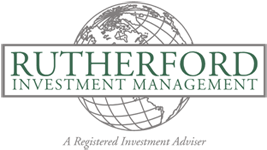Published March 5, 2021

In the past week the market hit that wall head-on.
The market had been moving up nicely, so what happened that led to it hitting a solid obstacle?
It was a case of good news and bad news. As often happens, investors were lured by the market into a sense of security by benign interest rates, a supportive Federal Reserve and a likely stimulus package for the economy. However, as the economy began to improve, interest rates began to rise. The 10-year Treasury yield, a benchmark for investors, traded as high as 1.6 percent – a move that was unnerving to investors. The 10-year yield moved more than half of a percentage point in two months, which is a rapid increase for the bond market.
Never mind that the unemployment rate in the country is still high or that Fed Chairman Jerome Powell promised to be supportive with low interest rates. Rates began to rise. A rise in interest rates would not be too bad, if it signaled an improving economy, but this rise was too fast. A rise in interest rates could also signal a rise in inflation. Indeed the 5-year TIPS/Treasury Breakeven Rate, an indicator of the markets’ expectations for inflation, rose to 2.38 percent in the last week of February – its highest level since before the 2008 financial crisis. The rapid rise in interest rates was too much too soon. The market was spooked.
The interest rate on 10-year Treasurys, a popular benchmark for the bond markets, began to reach the dividend yield on S&P stocks. Just as water seeks its own level, investors began to move their investments to more secure bonds from stocks. Fueling the rotation of stock holdings into bonds was also the automatic rebalancing of portfolios that occurs when a rising asset class – in this case stocks in the recent past – must be sold and the underperforming asset class purchased in order to maintain the target ratio for the fund or endowment.
This movement dampened the demand for stocks and led to a sharp decline in the equity market. Was it because things were bad? On the contrary, the economic outlook was improving. But was it improving enough that interest rates should rise? Was the bond yield suggesting that we should expect more inflation than we thought? Investors were uncertain, and if there is anything that the markets hate, it is uncertainty.
With bond yields approaching the S&P dividend yield, the safer play appeared to be bonds. And so the market reacted with rising bond prices and lower equity prices, even though the economy remained fundamentally sound. The market worry just became too much to ignore, despite economists and market indicators saying that the economy was still growing. The market simply adjusted its outlook for inflation.
The higher yield raised the entire yield curve, with longer yields rising too. Strong economic data also boosted yields. New unemployment insurance claims came in at 730,000 below the 845,000 expected. Durable goods orders were stronger than expected. The Purchasing Managers’ Index came in at 59; anything over 50 is considered expansionary. The updated GDP growth estimate for the fourth quarter of 2020 came in at 4.15 percent, above the reading from last month. Economic growth in the first quarter could hit 10 percent, according to a Federal Reserve tracker. Manufacturing is at its highest level since 2018. And Congress is poised to spend $1.9 trillion to boost the economy.
What will happen next? The Senate will certainly pass the stimulus package, and the Fed chairman will reassure the markets about the Fed support for the economy. Will that be enough? More concrete action may be necessary. An infrastructure spending bill could be necessary. But the economy is growing, and the virus appears to be abating for now. The gross domestic economy is expanding, which signals better times. Should we just wait? As Warren Buffett has famously said, “don’t bet against the U.S. economy.”
If the economy grows, and we believe it will, the best place to be is in sectors that are experiencing the greatest rate of growth, such as technology, health care and consumer stocks. We are likely to see inflation, which would also suggest investing in hard assets such as real estate. Being diversified is still a good strategy.
William Rutherford is the founder and portfolio manager of Portland-based Rutherford Investment Management. Contact him at 888-755-6546 or wrutherford@rutherfordinvestment.com. Information herein is from sources believed to be reliable, but accuracy and completeness cannot be guaranteed. Investment involves risk and may result in losses.
The opinions, beliefs and viewpoints expressed in the preceding commentary are those of the author and do not necessarily reflect the opinions, beliefs and viewpoints of the Daily Journal of Commerce or its editors. Neither the author nor the DJC guarantees the accuracy or completeness of any information published herein.
